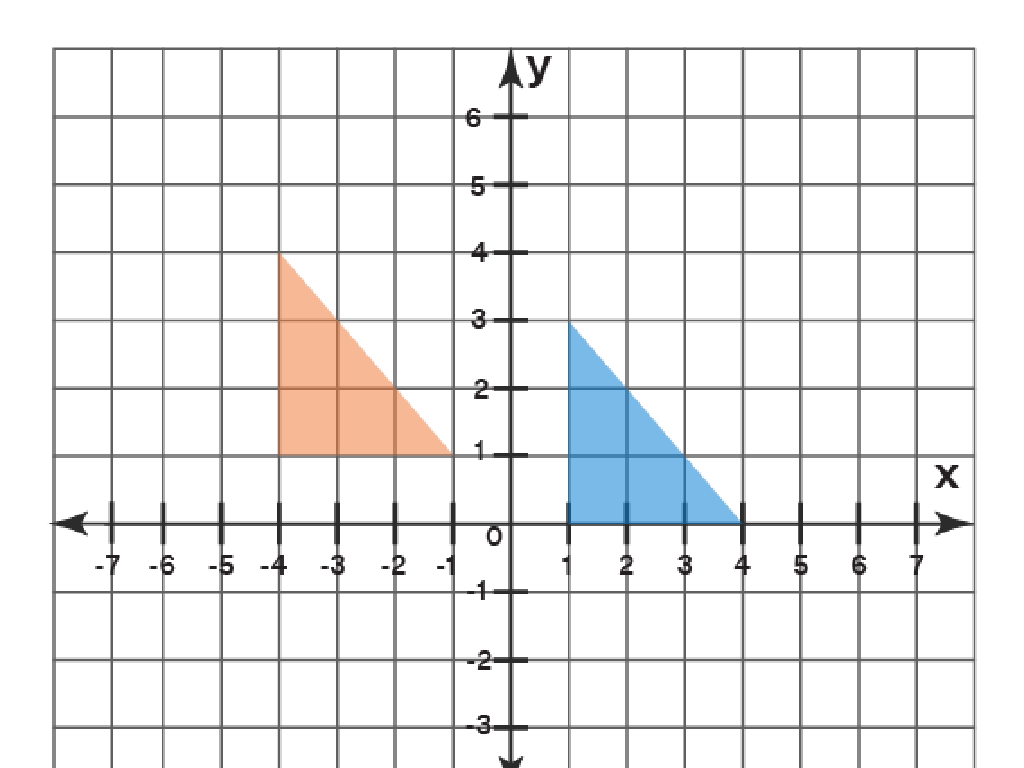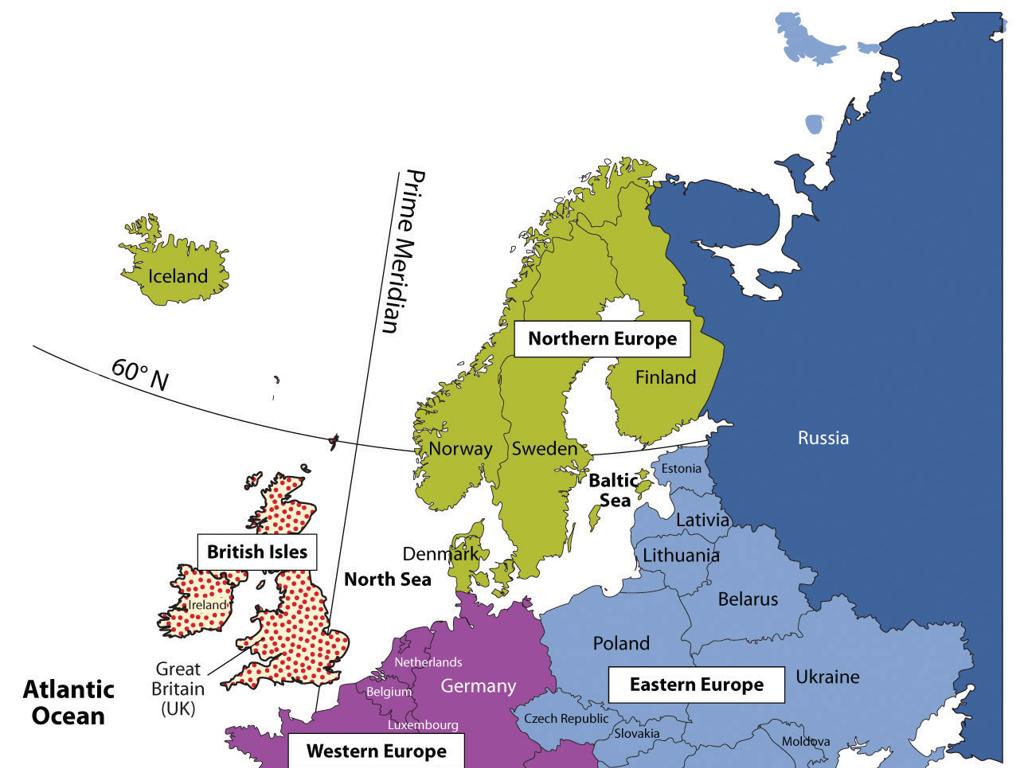Name Countries Of Europe: Region 4
Subject: Social studies
Grade: Seventh grade
Topic: Europe: Geography
Please LOG IN to download the presentation. Access is available to registered users only.
View More Content
Exploring Europe: Region 4 Countries
– Europe’s diverse geography
– What are ‘regions’?
– ‘Regions’ divide areas with common characteristics
– Focus on Region 4
– Discovering the unique features of Region 4
– List of Region 4 countries
– Examples: Hungary, Czech Republic, Slovakia
|
This slide introduces students to the geographical diversity of Europe and the concept of regions, which are areas grouped together based on shared features, such as culture, language, or climate. Today’s lesson will concentrate on Region 4, which includes countries in Central Europe. Provide a list of these countries, such as Hungary, the Czech Republic, and Slovakia, and discuss their location, capital cities, and any significant geographical features. Encourage students to research one country from Region 4 for a brief presentation in the next class, focusing on its geography, culture, and how it relates to the rest of Europe.
Exploring Europe: Region 4
– Define Europe’s Region 4
– Region 4 includes countries in Southeastern Europe.
– List Region 4 countries
– Countries: Greece, Albania, North Macedonia, Bulgaria, and Turkey.
– Geographical features of Region 4
– Mountains, rivers, and coastlines dominate the landscape.
– Cultural significance of Region 4
– Region 4 is rich in history and cultural diversity.
|
This slide introduces students to Region 4 of Europe, which is generally considered to encompass Southeastern European countries. It’s important to provide a clear definition of the region and list the countries that are included, such as Greece, Albania, North Macedonia, Bulgaria, and Turkey. Discuss the varied geographical features, including the Balkan Mountains, the Danube River, and extensive coastlines along the Mediterranean and Aegean Seas. Emphasize the cultural and historical importance of this region, which has been a crossroads of civilizations for centuries. Encourage students to explore the unique characteristics of each country and how geography has influenced their development.
Exploring Europe: Region 4 Countries
– List of Region 4 countries
– Includes countries like Hungary, Poland, Czech Republic
– Capitals of these countries
– Budapest, Warsaw, Prague are the capitals
– Fun facts for each country
– Hungary is known for its thermal baths, Poland for pierogi, Czech Republic for its historic castles
– Cultural significance
|
This slide aims to familiarize students with the countries of Europe’s Region 4, their capital cities, and interesting cultural facts. Start by showing the list of countries in this region, ensuring to highlight Hungary, Poland, and the Czech Republic as examples. Discuss the capitals of these countries and how they play a significant role in the identity and governance of each nation. Share engaging facts about each country to pique students’ interest, such as Hungary’s famous thermal baths, Poland’s delicious pierogi, and the Czech Republic’s historic castles. Encourage students to research more fun facts as a homework assignment to deepen their connection with the material and enhance their understanding of Europe’s diverse cultural landscape.
Cultural Diversity in Europe: Region 4
– Diversity of languages
– Explore the variety of languages like Italian, Greek, and Croatian.
– Unique cultural practices
– From Italian opera to Greek mythology, traditions vary widely.
– Celebrated festivals
– Venice Carnival, Oktoberfest, and the Running of the Bulls.
– Regional holidays
– Italy’s Ferragosto, Greece’s Ohi Day, and Croatia’s Statehood Day.
|
This slide aims to highlight the rich cultural diversity within Europe’s Region 4, focusing on the languages, cultural practices, festivals, and holidays that make this area unique. Students should understand that Europe’s cultural landscape is as varied as its geography, with each country having its own set of traditions and celebrations. Encourage students to research and share additional cultural aspects of these countries. Discuss how cultural practices shape a region’s identity and the importance of respecting and understanding cultural differences. This can be an interactive session where students can compare these cultural elements with their own, fostering a global perspective.
Physical Geography of Europe: Region 4
– Major mountains and rivers
– Explore the Alps, Danube River, etc.
– Climate impact on lifestyle
– How does climate shape daily life?
– Region 4’s natural resources
– Discover coal, natural gas, and more
– Understanding topography
|
This slide aims to introduce students to the physical geography of Europe’s Region 4, focusing on the major mountains and rivers such as the Alps and the Danube River. Discuss how the climate in this region affects the lifestyle of its inhabitants, including clothing, activities, and housing. Highlight the natural resources found in Region 4, such as coal, natural gas, and fertile soil, and how these resources contribute to the economy. Encourage students to think about how the topography of a region can influence the development of a society. Provide examples and encourage students to research more about how people adapt to their environment in different parts of Europe.
Economic Overview of Europe: Region 4
– Major industries in Region 4
– Manufacturing, services, and tourism are key sectors.
– Agriculture and trade practices
– Farming techniques vary; trade is vital for economies.
– Economic challenges faced
– Issues include unemployment and economic disparity.
– Opportunities for growth
– Innovation and EU policies can drive future success.
|
This slide provides an overview of the economic landscape in Europe’s Region 4. It highlights the predominant industries, such as manufacturing, services, and tourism, which are central to the economies of these countries. Agriculture remains a traditional practice, with modern trade agreements bolstering international relations. Students should understand the economic challenges that these countries face, including high unemployment rates and economic inequality among regions. However, there are also opportunities for growth through technological innovation and supportive policies from the European Union. Encourage students to think about how these economic factors influence daily life and the future of the region.
Class Activity: Mapping Europe’s Region 4
– Receive a blank map of Europe
– Label Region 4 countries
– Focus on countries like Hungary, Czech Republic, Slovakia, and Austria
– Mark capital cities
– Capitals: Budapest, Prague, Bratislava, Vienna
– Highlight major physical features
– Rivers, mountains, and other landforms
|
This interactive class activity is designed to help students familiarize themselves with the geography of Europe, specifically Region 4. Each student will be provided with a blank map to actively engage in the learning process. They will identify and label countries in Region 4, such as Hungary, Czech Republic, Slovakia, and Austria. Additionally, they will mark the capital cities and major physical features like rivers and mountains. This hands-on approach aids in retaining geographic knowledge and understanding the spatial relationships between countries. For the teacher: Prepare blank maps and a list of Region 4 countries, capitals, and major physical features. Consider creating a rubric for assessment that includes correct country and capital identification, as well as accurate marking of physical features. Offer support as students work on this task and encourage peer collaboration.
Reflections on Europe: Region 4
– Recap of Region 4’s countries
– Interesting facts about Region 4
– Share the fact that intrigued you the most
– Geography’s impact on culture
– Discuss how mountains, rivers, etc., shape cultural practices
– Geography influencing economy
– Explore how geography dictates trade, agriculture, and industry
|
This slide aims to consolidate the students’ knowledge of Europe’s Region 4 by encouraging them to reflect on what they’ve learned. Start by reviewing the countries that make up Region 4. Ask students to think about and share the facts that they found most interesting, which can include historical events, cultural practices, or natural landmarks. Discuss how the physical geography of Region 4, such as its mountain ranges, rivers, and climate, influences the cultural identity and daily lives of its inhabitants. Lastly, explore how these geographical features affect the economic activities of the region, such as the types of crops grown, the presence of trade routes, or the industries that are prominent. This discussion will help students understand the interconnectedness of geography, culture, and economy.
Homework: Explore a European Country
– Research a Region 4 country
– Focus on culture, geography, economy
– Look into traditions, language, landscape, climate, industries, and GDP
– Create a short presentation
– Present your findings next class
|
Students are tasked with independently researching a country from Europe’s Region 4, which includes countries such as Hungary, Poland, Czech Republic, and Slovakia. They should explore various aspects of the chosen country, including its unique cultural practices, geographical features like mountains and rivers, and economic factors such as main industries and GDP. Students will then prepare a short presentation to share their findings with the class. This assignment will help students develop research skills and gain a deeper understanding of European geography and cultural diversity. Provide guidance on reliable sources for research and tips on how to structure their presentations effectively.






